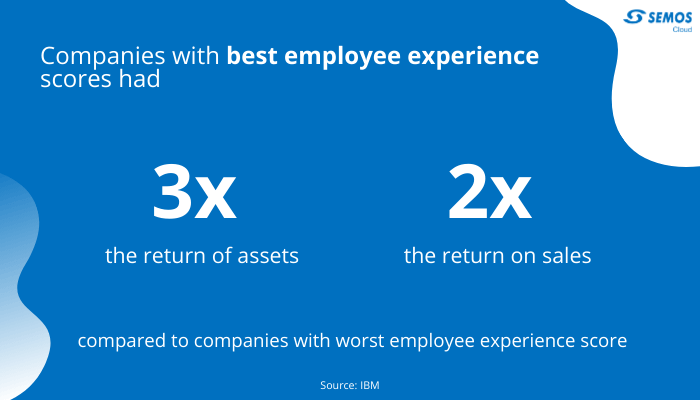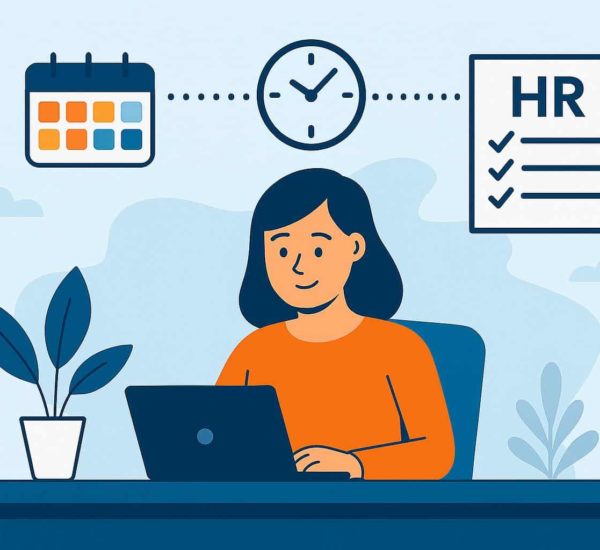Every year, employees look forward to an unbiased evaluation and appraisal. If done correctly, these employee assessments help retain high performers and cultivate a sense of loyalty.
Appraisals are an increase in their compensation as a reward for their diligence, conduct, and loyalty. But, what role does HR play in it? HR’s role is not just limited to doling out certain percentages and figures every year for each employee. They’re also an integral part of conducting painless employee assessments for managers and employees.
Employee assessments can be tedious and involve every ounce of reasoning, analysis, and judgment to come to those unbiased figures.
In this blog, we will be talking about how the assessment of employees is important and the best practices that ensure your organization does it the right way.
What are Employee Assessments?
Employee assessments refer to practices that help HR gauge employee performance over a pre-determined period of time. This evaluation further helps them in deciding appraisals.
While employee assessments may be seen as a once-a-year activity, more companies are now adopting the practice of providing more frequent feedback to the employees. This helps the employees assess themselves and their own performance periodically, while constantly working on their weaknesses and improving their strengths. In addition, this boosts team productivity and performance, and by extension, the company’s performance.
Why are Employee Assessments Important?

Source: IBM
According to IBM, organizations that have the best employee experience have nearly thrice the return of assets and twice the return on sales as compared to others.
Employees work better when they know that there is an incentive for high performers. This has a positive impact on productivity and overall work culture.
Here are a few reasons why employee assessments are important:
- Regular employee assessments help employers understand where their employees lagging
- Assessment of employees helps them find out their strengths and weaknesses and constantly work on them
- It improves employee satisfaction and productivity
- Satisfied employees have better relationships within the organization and colleagues, contributing to a good work environment
- Employee retention rate increases with better employee loyalty
Before we delve into the best practices for the assessment of employees, let’s take a look at why they need to be conducted in the first place.
Why are Employee Assessments Conducted?
The overall goal is to improve work culture and individual employee performance. Employee assessments work on both micro and macro levels. Let’s break those down into a few simple points:
- It helps HR know how to evaluate each employee
- The employees know the standards and goals they are expected to meet
- It gives the managers a chance to understand their subordinates better
- HR and the manager can plan the employees’ career paths with assessment and evaluation procedures
- These assessments serve as the building blocks for HR metrics that can be the basis of annual appraisals
- It is also a great way of giving performance-related feedback to the employees
14 Best Practices for Effective Employee Assessments

Now that you know how important the assessment of employees is, you may wonder what is the best way to conduct it. Let’s take you through some of the best, tried-and-tested employee assessment practices.
Practices for Employee Assessments #1
Set Performance Standards
First things first, it is important to have clarity. This clarity comes when the employee is absolutely sure of how they are supposed to perform. This further depends on how clear they are when it comes to their job responsibilities. Outline all the responsibilities of employees, irrespective of their level.
Keep in mind that the standards set should be practical and achievable.
Practices for Employee Assessments #2
Set Clear Goals
Another important thing is to set crystal clear goals. The main difference between standards and goals is that the former is generic in nature whereas the latter is specific to an employee.
Goals are created after taking into consideration a combination of the strengths and weaknesses of an employee. These goals translate into the key performance indicators that are specific to each employee. If these are set at the start of a working year, it is easy to assess the individual employee performance at the end of it. These goals also form benchmarks against which the merit and performance of the employee are judged. Of course, these goals should be realistic in nature.
Practices for Employee Assessments #3
Be Consistent
The best way to be consistent with employee assessments? Set criteria. We can all agree that there can be no template for judging every employee. But there are certain standards that HR can set while creating employee evaluation and assessment forms. The key is to be consistent.
Your parameters for judging employees should be the same and in alignment with the cultural values of the company. Except for the key performance indicators and specific departmental or employee goals, the other parameters should be clear and transparent.
Practices for Employee Assessment #4
No Room for Discrimination
Bias can be inherent to human nature and workplaces are no different. But, like all instincts, even bias can be controlled and offset.
Employee assessments are faulty if discrimination or bias of any kind enters the equation. HR should make sure that all the levels of employee assessments are judged only on the basis of employee performance as per the KPIs and the generic conduct parameters set for everyone in the organization.
There should be no room for bias to creep in at any appraisal.
Practices for Employee Assessments #5
Focus on the Learning
The main goal of employee assessments is to help employees grow. If employees have a system in place that can help them identify their strengths and weaknesses and enable them to fill the gap, they will be able to focus on their learning. This helps in the organization’s growth.
Practices for Employee Assessments #6
Recognize and Elevate Employee Strengths
It is important to focus on the strengths of the employee. It is not possible for each employee to be entirely consistent with their goals and even performance each assessment year.
But this reduction in performance may not mean that they are slacking off. This may mean that they are facing some difficulties and need help. That is when HR should step in and ensure the employee gets the required assistance. The company must focus on its employee’s strengths and remind them of what they are capable of.
It is all right to fall at times, but only if the employee is willing to try and get back up.
Practices for Employee Assessments #7
Performance Not Personality
As humans, it is easy for us to give in to certain superficial judgments. Workplace politics, gossip, and ridicule is often cruel. While some of the jokes may be harmless, others, if carried on for a long time, may affect judgments. Make sure that is not the case while assessing an employee for an appraisal.
Agreed, employee conduct and appearance do matter, but it should not be a cause for performance appraisal. It may be a cause for a one on one meeting that discusses such matters, but that should be all.
Performance should always matter more than certain personality traits. The latter can be worked upon and should not be looked down on or ridiculed, least of all in employee assessments.
Practices for Employee Assessments #8
Give Specific Feedback
Do not be hesitant when it comes to giving feedback to the employees. Specific and direct feedback may sound a little stern at first but is for their benefit. Be direct and honest with the feedback and point out the exact issues.
Start off by telling them where they went right and which activities were beneficial for the organization as a whole. Then steer the conversation to where they can improve and how HR can help them work on these shortcomings.
Practices for Employee Assessments #9
Recognize and Reward
Why should employees work on their weaknesses and strive to improve continuously? Passion and loyalty can be motivators, but compensation is another important one.
Recognize and reward your employees during the course of the assessment and after.
Another good way of measuring performance is by comparing two subsequent evaluations and recognizing if the employee accomplished the goals that were set the last time.
Practices for Employee Assessments #10
Give 360-degree Feedback
This may not be a popular practice yet but is gaining prominence with the ever-changing workplace dynamics. 360-degree feedback refers to a system where employees receive feedback from all the people who work around them. These people include managers, peers, subordinates, and HR.
A total of around eight to ten people who work around the employee fill an anonymous feedback form, which then becomes a part of the annual review or employee assessment.
This is a novel way of conducting employee assessments as it looks at employee performance from different angles.
Practices for Employee Assessments #11
No Comparisons
Do not compare employees, ever.
No matter how good your personal relationship may be with certain employees, do not let that affect your judgment when it comes to employee assessment. Also, never pit two employees against each other. Not only is it a bad practice, but it will also weaken relationships within the company, affecting the overall productivity and environment.
Remember, the goal of employee assessment is to collectively grow the employees and the organization. That will certainly not happen if you pit employees against one another.
Practices for Employee Assessments #12
Track Employee Assessment Impact
Employee assessment programs should be continuously monitored to gauge whether or not these are making the required impact. The purpose of the assessment of employees is to make sure that employees improve with each assessment.
Practices for Employee Assessments #13
Discuss the Employee’s Future
Employee assessments should also be considered as a good opportunity to discuss an employee’s future and see what advancement the organization can provide to their career.
If an organization focuses on the overall development of its employees, it not only fosters loyalty but also makes a solid base for better teams that perform well.
Further, when employees recognize that assessments do not just exist to tell them how well they sync with the organization but also how well the organization syncs with them and their career trajectory, this reduces the attrition rate and improves the retention rate.
Practices for Employee Assessments #14
Make Employee Assessment an Ongoing Process
Employee assessments should be consistent and not a one-off affair. If it is done periodically, it encourages employees to perform better with each evaluation period. This also gives HR a chance to review if their assessment plan is serving its purpose and they fine-tune it for the next cycle.
Do you Need Employee Assessments?

Yes, employee assessments are important because they significantly improve employee performance and productivity. Often, it is neither feasible nor practical to fire a poorly performing employee. Employee assessment helps you know the reason behind that non-performance and also helps in addressing it. It not only helps with performance but also helps foster employee loyalty.
How does an assessment of employees take place at your workplace? What are the practices that you follow? Do share with us at @HarmonizeHQ.



